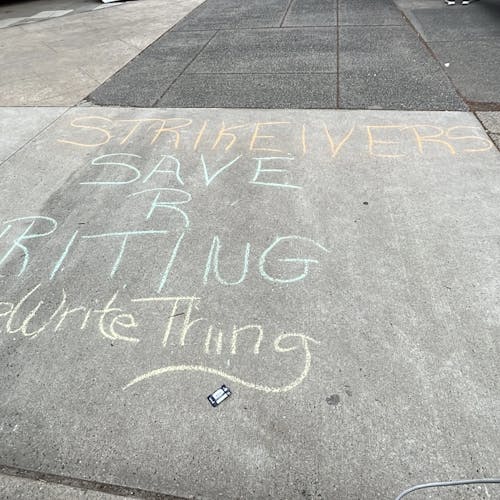‘I, Chicken’ virtual simulation creates empathy for abused animals

Students had the opportunity to virtually step into the body of a chicken moments before being slaughtered during yesterday’s “I, Chicken” presentation.
As the youth branch of People for the Ethical Treatment of Animals, peta2 brought the two-minute simulation to the Douglass Student Center.
According to psychologists, 20 percent of the people who go through the simulation will show increased empathy toward all animals afterwards, said Alex Guay, a representative for peta2. By the end of the year, the simulation will have visited over 170 college campuses.
After strapping on arm pads, goggles and a backpack, students were transported into the world of a chicken. Placed in a large field surrounded by other chickens, participants could walk around, flap their wings and even see their reflection in the hubcap of a tire.
Moments later, a farmer in the distance told his associates to capture the animals and load them onto a truck. The next scene showed a dozen other chickens packed tightly into a cage being transported up a conveyor belt.
“With this virtual reality experience, we chose chickens because they are the most abused animals on this planet,” Guay said.
Out of the 11 billion land animals killed each year, nine million are chickens, and not a single law protects them, Guay said.
The simulation prompts students to learn about the vegan lifestyle. Pamphlets, bracelets and additional information were distributed to participants.
Sam Simon, philanthropist and co-creator of “The Simpsons,” funded the “I, Chicken” program, which has already visited Princeton, Harvard and Brown.
Before going through the simulation, Marques Jules, a School of Arts and Sciences first-year student, was not confident he could be persuaded to switch to a vegan diet.
“I feel as if I’ve made a relationship with eating meat, and I don’t know if I could turn back now,” Jules said. “Meat just tastes too good.”
Some students left unconvinced to stop consuming meat, but Guay said this is not the usual response. It would take more exposure to animal abuse to change someone people’s minds.
Gopal Govindraj, a School of Arts and Sciences senior, was left with questions after taking off the goggles.
Though he understood why poultry would never be found on a vegan’s grocery list, he wondered why drinking milk is frowned upon.
The reason is that female cows used for milk are forcibly impregnated over and over again on what the industry calls “rape racks,” Guay said. The female cows then have their calves taken away from them after birth so humans can drink the milk they produce.
Milk also has an environmental impact. It takes about 1,000 gallons of water to produce one gallon of milk because the crops the cows eat need to be watered. Almond milk, the vegan alternative, only takes 50 gallons, Guay said.
Though Govindraj is unsure whether or not he will give up milk in the foreseeable future, the simulation caused him to consider switching to almond milk.
One of the reasons Guay became involved with the event was to increase awareness of the health benefits of going vegan. A vegan diet can add seven to nine years to a person’s life and help lower the risks of cancer, stroke and heart disease.
For attendees who were interested in a vegan lifestyle, there are foods they can eat for protein aside from meat, such as tofu, veggie burgers, peanut butter and black beans.
If a vegan is craving cheese, he or she could look for alternatives in the grocery store, such as “Teese Vegan Cheese,” “Tofutti” or “Follow Your Heart” cream cheese.
“I didn’t go through the simulation with the idea that I would change to a vegan diet overnight,” Jules said. “But the simulation was eye-opening and made me think about food choices I make.”



